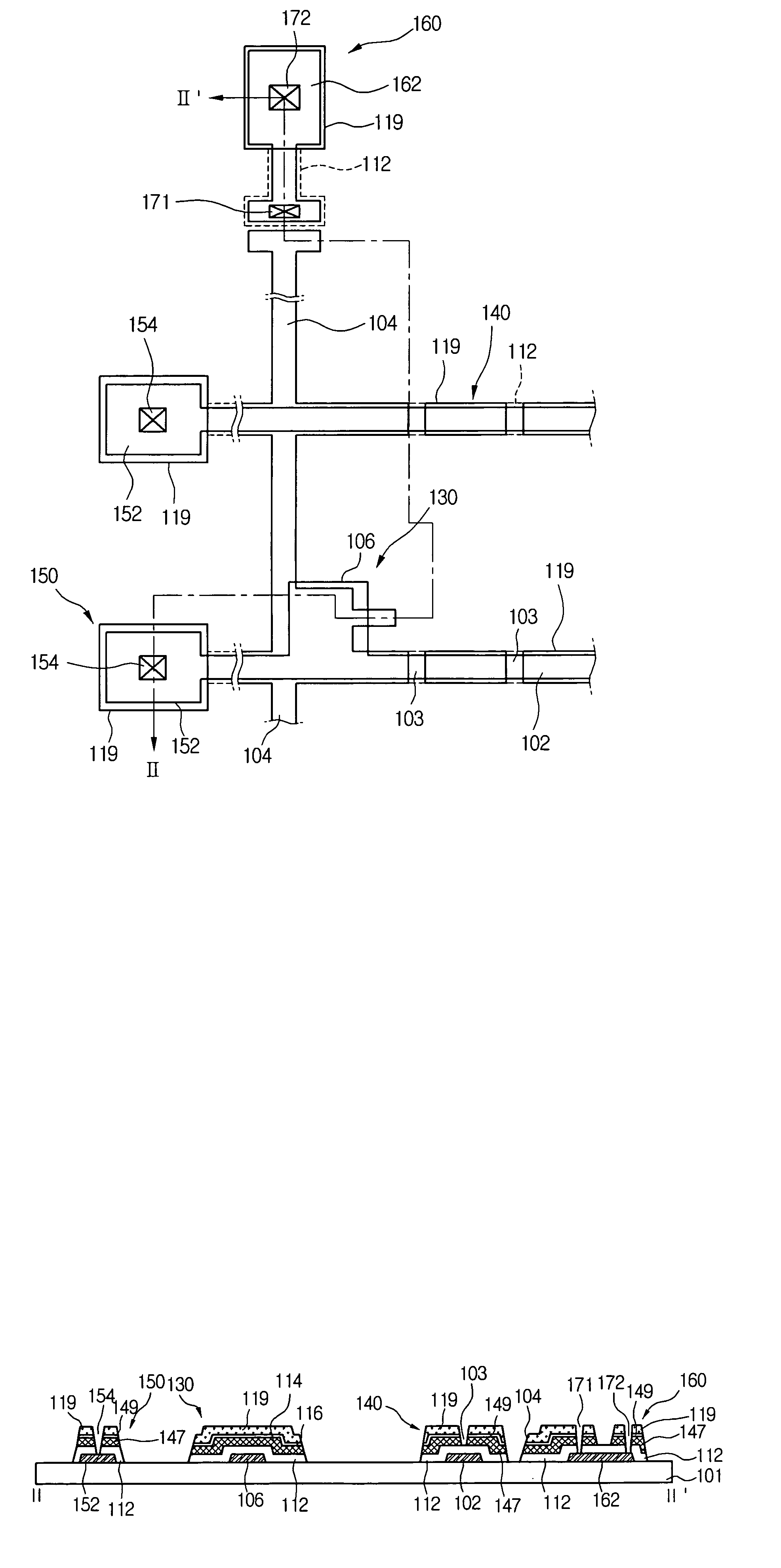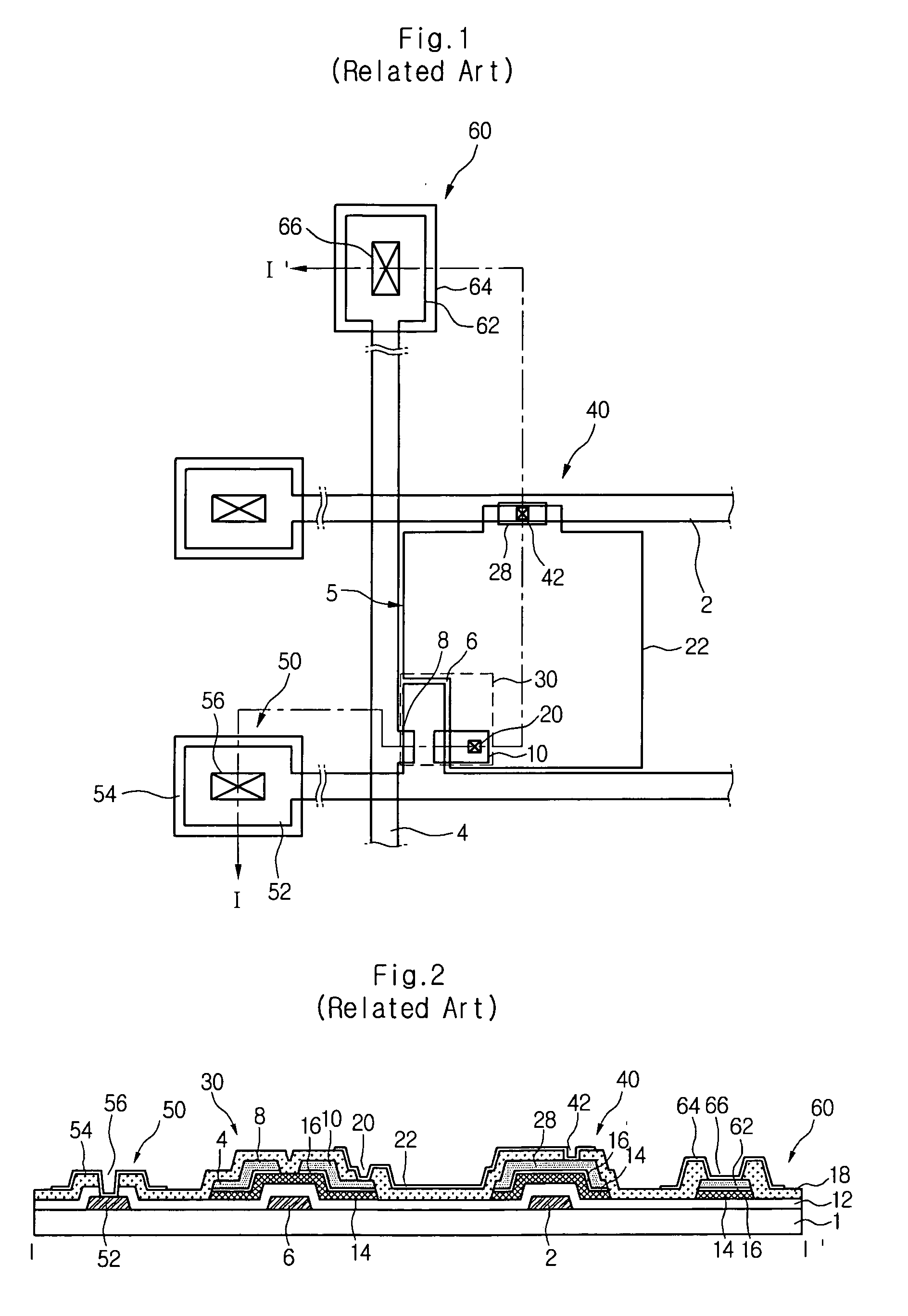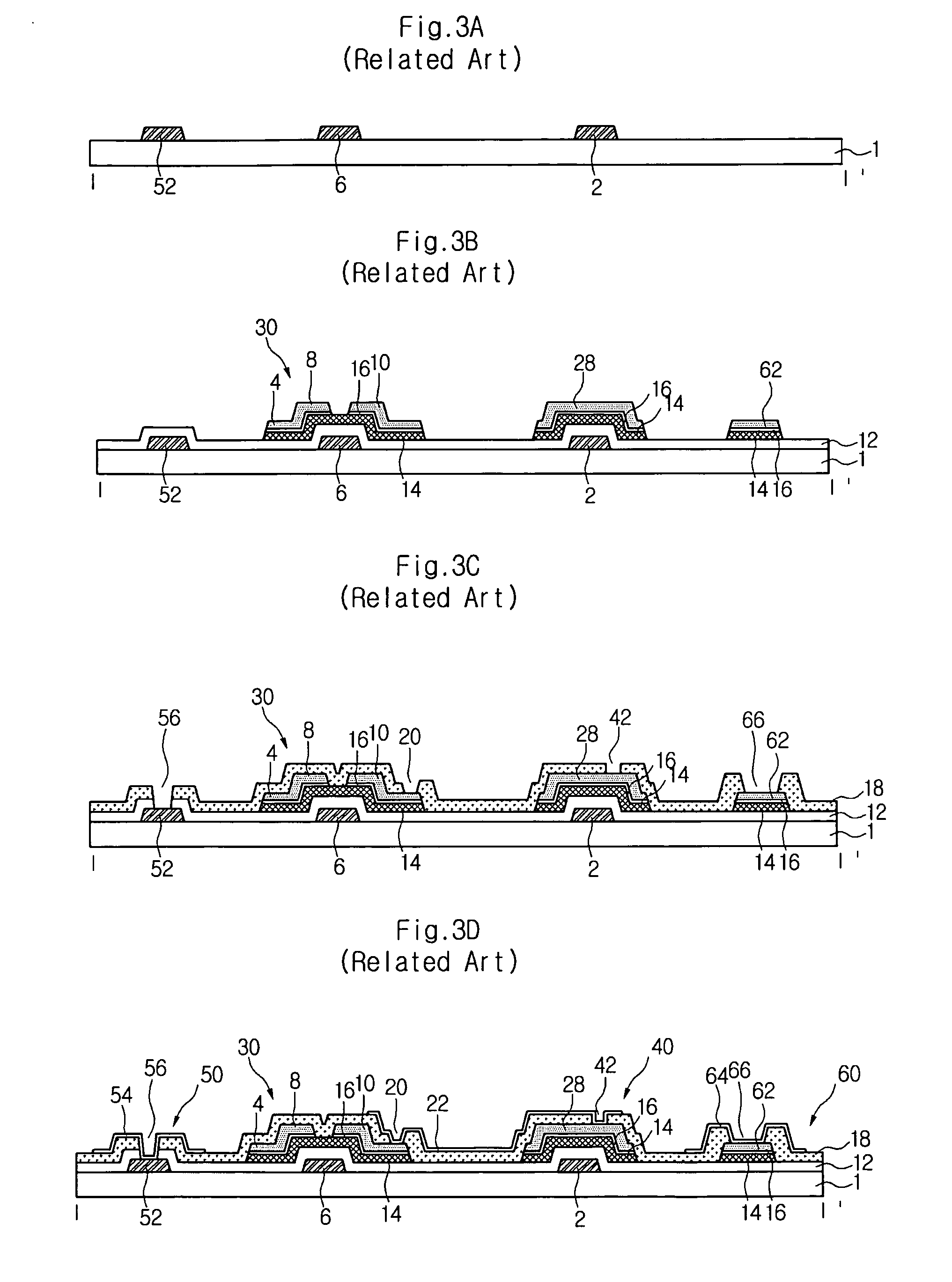TFT array substrate and fabrication method thereof
- Summary
- Abstract
- Description
- Claims
- Application Information
AI Technical Summary
Benefits of technology
Problems solved by technology
Method used
Image
Examples
Embodiment Construction
[0064] Reference will now be made in detail to the preferred embodiments of the present invention, examples of which are illustrated in the accompanying drawings.
[0065]FIG. 4 is a plan view of a TFT array substrate according to the present invention, and FIG. 5 is a sectional view taken along line II-II′ of FIG. 4.
[0066] Referring to FIGS. 4 and 5, the TFT array substrate includes a gate insulating layer 112 on a lower substrate 101, a TFT 130 formed at each crossing portion, a pixel electrode 122 formed in a pixel region 105 defined by the crossing gate and data lines, and a channel passivation layer 120 for protecting the TFT 130.
[0067] Also, the TFT array substrate further includes a storage capacitor 140 formed by an overlapping portion of the gate line 102 and the pixel electrode 122, a gate pad 150 connected to the gate line 102, and a data pad 160 connected to the data line 104 by a jumping structure. The gate line 102 that supplies a gate signal and the data line 104 that...
PUM
 Login to View More
Login to View More Abstract
Description
Claims
Application Information
 Login to View More
Login to View More - R&D
- Intellectual Property
- Life Sciences
- Materials
- Tech Scout
- Unparalleled Data Quality
- Higher Quality Content
- 60% Fewer Hallucinations
Browse by: Latest US Patents, China's latest patents, Technical Efficacy Thesaurus, Application Domain, Technology Topic, Popular Technical Reports.
© 2025 PatSnap. All rights reserved.Legal|Privacy policy|Modern Slavery Act Transparency Statement|Sitemap|About US| Contact US: help@patsnap.com



